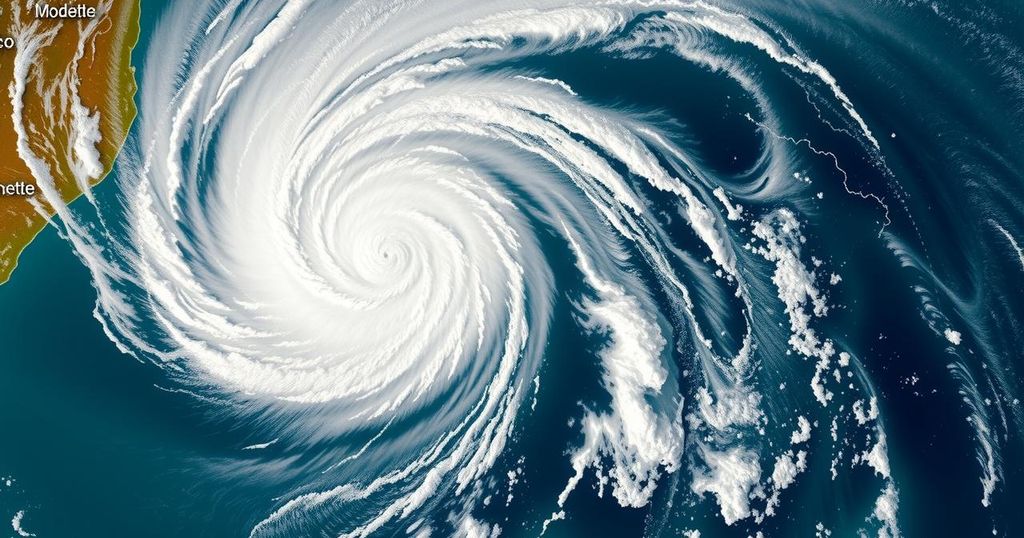Tropical storm Dikeledi traversed towards Mozambique after causing at least three deaths in Madagascar and heavy flooding in Mayotte. The storm has weakened but remains a concern due to continuing high winds and rainfall. Mayotte is under red alert, and recovery efforts are hindered by prior cyclonic damage, notably from Cyclone Chido. Meteorological authorities are closely monitoring Dikeledi as it approaches Mozambique, predicting intensifying weather conditions.
Tropical storm Dikeledi moved towards Mozambique on Monday after causing fatalities in Madagascar and triggering significant flooding in Mayotte, a French territory. Having made landfall as a cyclone on Saturday, Dikeledi left at least three deceased, as reported by the National Office for Risk and Disaster Management. As of Sunday morning, the storm diminished to a severe tropical storm, passing Mayotte approximately 100 kilometers away. Prefect Francois-Xavier Bieuville retained a red alert status, despite no reported casualties from the storm’s impact in Mayotte, due to persistent high winds and rainfall.
The region faces challenges in recovery, still reeling from Cyclone Chido, which resulted in at least 39 fatalities and over 5,600 injuries. While Dikeledi approached Mozambique’s coast, it was expected to intensify into a robust cyclone. Heavy rains persisted across Mayotte, raising concerns about flooding, particularly in several inundated villages. The local population remained confined due to the imposed travel ban, with emergency services mobilized to address the crisis. As Dikeledi neared Mozambique, warnings of severe weather conditions were issued for the Nampula region, emphasizing the cyclone’s potential destructive impact.
Cyclones develop in the Indian Ocean primarily between November and March. The current surface water temperatures in the region, nearing 30 degrees Celsius, contribute to the storms’ heightened intensity—an occurrence linked to global warming patterns observed across various ocean regions. Authorities continue to monitor weather conditions closely as the region prepares for further storms.
The Indian Ocean cyclone season typically spans from November to March, with notable climate patterns impacting storm intensity. Tropical storms and cyclones tend to form over warm waters, where temperatures of around 30 degrees Celsius facilitate their development and strength. This year, scientists have observed an increase in surface water temperatures, leading to warnings of more intense cyclonic activity. Previous cyclones, such as Chido, have had devastating effects in the region, highlighting the ongoing challenges faced by affected territories like Madagascar and Mayotte.
In summary, tropical storm Dikeledi continues to affect the already vulnerable region of Madagascar and Mayotte as it heads towards Mozambique. The impacts of recent cyclones emphasize the importance of disaster preparedness in this cyclical weather pattern, particularly given the heightened temperatures linked to climate change. As communities attempt to recover from prior storms, they now brace for the potential escalation of Dikeledi, reinforcing the necessity for robust emergency responses and infrastructure resilience.
Original Source: www.bryantimes.com





